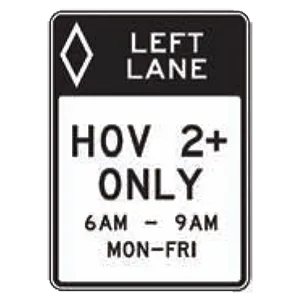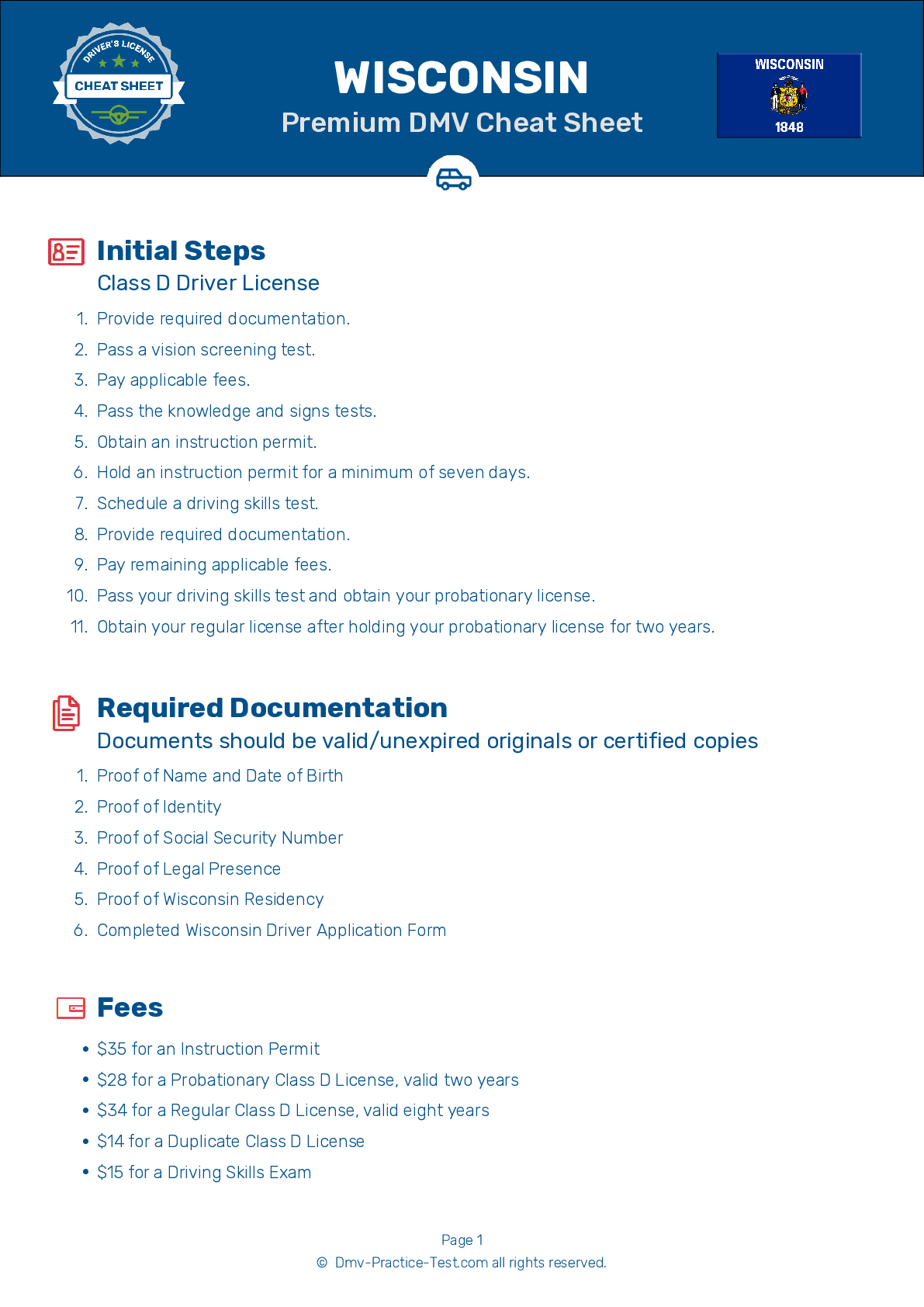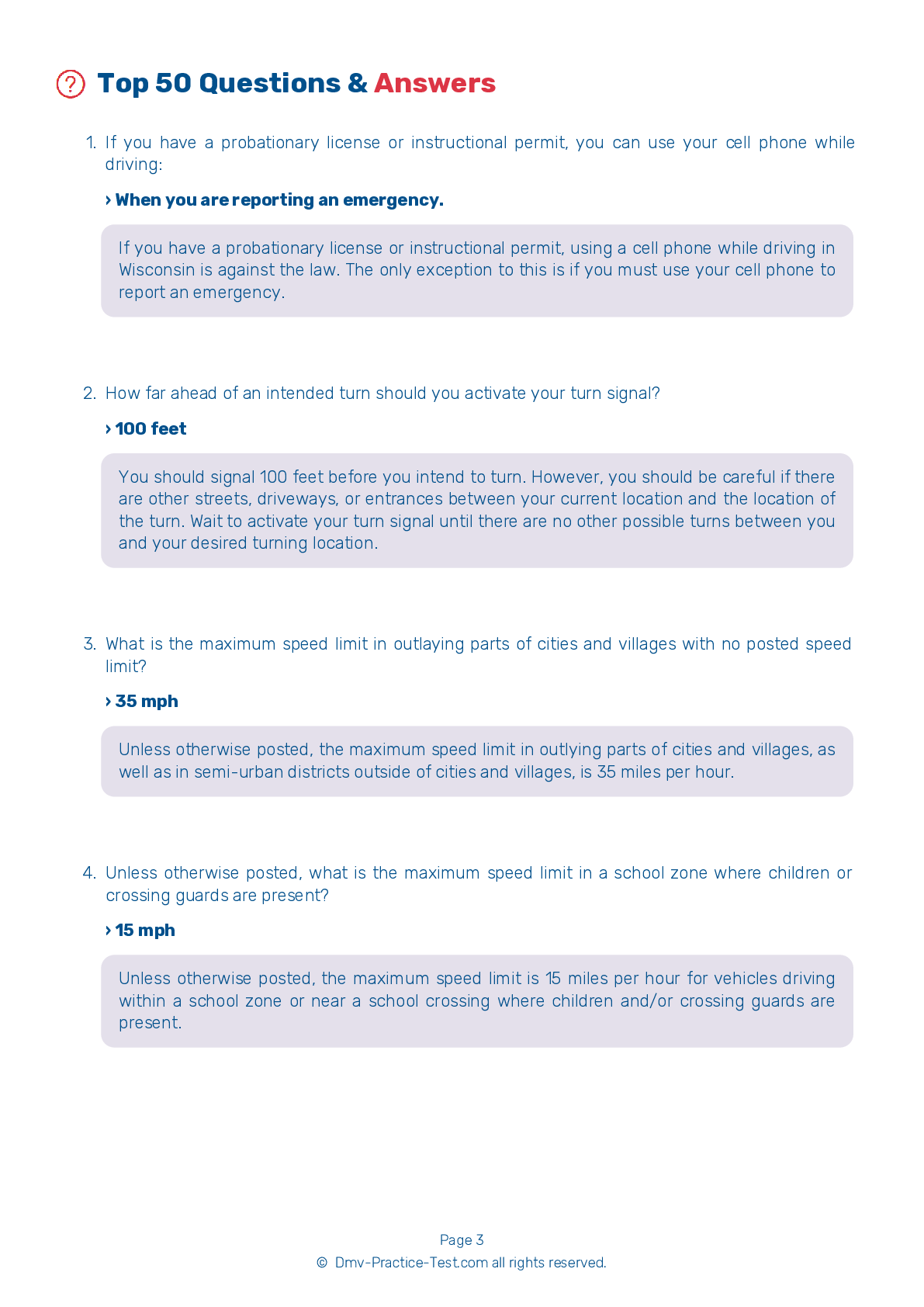FREE Wisconsin DMV Practice Test #7
The Wisconsin DMV practise examinations have been updated for January 2025. It includes questions based on the Wisconsin Driver Handbook's most significant traffic signals and legislation for 2025. Use actual questions that are very similar (often identical!) to the DMV driving permit test and driver's licence exam to study for the DMV driving permit test and driver's licence exam.
On the practise exam, each question gets a tip and explanation to help you remember the concepts. The written component of the official Wisconsin DMV test will include questions about traffic rules, traffic signs, and driving statutes, as well as knowledge from the Driver Handbook.
To obtain a passing grade, you must correctly answer 40 of the 50 questions. Use the practise exam provided by the Wisconsin Department of Motor Vehicles to help you prepare for your instruction permit or driver's licence.
The DMV exam is available in several languages.
Using any kind of testing assistance will result in an automatic fail, and the DMV may take additional action against your driver's licence, so stay away from it.
1 . If pedestrians are illegally crossing in the middle of the street instead of in a crosswalk, you:
You must yield to pedestrians at all times. If the pedestrians are jaywalking or crossing the street where they should not be, you must still stop for them.
2 . This road sign means:

This sign marks a high occupancy vehicle (HOV) lane. HOV lanes are reserved for use by buses and vehicles with a driver and one or more passengers, as indicated on the sign.
3 . When riding in a vehicle, small children:
Special child seats are available for children who are too small to wear regular safety belts. No person is strong enough to safely hold onto a child of any size during an accident or sudden stop. Never allow a child to ride in a vehicle unless they are properly fastened into a seat.
4 . Your brake lights tell other drivers that you:
Your vehicle's brake lights indicate to other drivers that you are slowing down or stopping. Your brake lights should always be in working order when you are driving on any roadway.
5 . If you miss your exit on the freeway, you should not:
If you miss your turn or exit, do not back up in the travel lane or on the shoulder. Continue to drive to the next exit or crossroad. Drivers do not expect a vehicle to be backing toward them on the roadway and doing so will likely cause a collision.
6 . Drivers who have consumed alcohol before getting behind the wheel:
Alcohol is a depressant that negatively affects judgment, vision, concentration, understanding of reality, and reaction time. It is never safe to consume alcohol in any amount before getting behind the wheel of a car.
7 . A driver can legally pass on the right side of another vehicle:
If there is an available passing lane, you may pass on the right of a vehicle or bicycle that is turning left or waiting to turn left. It is also legal to pass on the right when driving on a multilane road with two or more lanes traveling in the same direction. You may never drive off the pavement or main-traveled portion of the road to pass another vehicle.
Need Car Insurance? No problem!
Compare the best rates in Wisconsin and find a personalized policy that meets your needs.
1. Are You Currently insured ?
2. Married ?
3. Do you own your Home?
4. Do you have more than 1 car ?
5. Have you or a Family Member Honorably Served in U.S. Military ?
6. Your Name
7. Age
8. Zip code
IMPORTANT REMINDER:Auto Insurance is Mandatory to drive in Wisconsin. Get covered before you hit the road to avoid any fines.
Ranked by best match



